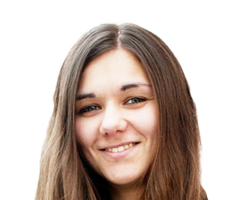While part of Amelia's work in the past week was explaining to her fellow MEPs the difference between infrastructure protection and intellectual property rights, I had the pleasure of learning about some of the European Parliament's unique infrastructure challenges first hand by accompanying Amelia to Strasbourg for the plenary week.
Historical quirks combined with a political stalemate in the Council have made the European Parliament a truly multinational entity - with facilities in Brussels, Strasbourg and Luxemburg. The parliament's administration is permanently located in Luxemburg and most of the MEPs' daily work takes place in Brussels. But once a month, the MEPs and their staff pack their belongings into military green boxes and make the four hour trip to the plenary session in Strasbourg, where the boxes are unpacked and, three days later, re-loaded and shipped back to Brussels. If this sounds somewhat unreasonable to you, do not despair: Through decisive austerity measures, the Union has managed to drastically reduce the costs of the commute to only about 150 million € per year.
As inviting as the Strasbourg plenary building looks from the outside, the fact that it is only used for a few days out of every month seems to take its toll in many areas. One gets the feeling that the technical systems just don't run as smoothly as in Brussels, including the electronic entry badges, the internet connections and the office lights that switch off and on randomly. These troubles may not have anything to do with the building per se, but rather with the unwillingness of MEPs and assistants to have any problems fixed when they know they will only have to endure them for three more days.
We are by no means immune to this problem. The idea of doing a blog post about our randomly working office lights, including the flickering we could observe from other offices outside our window, actually came to us before someone had the brilliant idea of simply asking building maintenance to have a look at the problem before the next Strasbourg week (we did call them, eventually, and they were very friendly).
The temporary nature of the Strasbourg work also shows in the reluctance to truly inhabiting the offices. Whereas the corridor of the Greens/EFA group in Brussels is reminiscent of a college dormitory, the dark blue, red and grey hallways in Strasbourg are completely bare. One brave German MEP has decorated his office door with a plain sheet of paper that reads "SpaĂźburg" - fun castle.
Lots of fun can be had with the idiosyncratic design of the Strasbourg parliamentary building. The strictly applied principle of "function follows form" offers delights such as elevators that are placed so far apart that they entice random groups of people to engage in games of moving chairs, and (speaking of moving chairs, these don't!) armchairs that may only be moved forwards and backwards, but not left or right. Getting lost in the Strasbourg parliament for the fifth time in a week, I couldn't help but feel like being in a Kafka novel. But I decided to just take this as another sign of the charmingly pan-european feel of the place. Some really do fall in love with the retro-futuristic architecture of the Strasbourg institutions. For those I recommend having a look at this foto essay on the Council of Europe building not far from the European Parliament.
Paying a visit, of course, is also highly recommended, but if you want to find a hotel room anywhere near the city center, try not to pick a Strasbourg week.










Lägg till ny kommentar